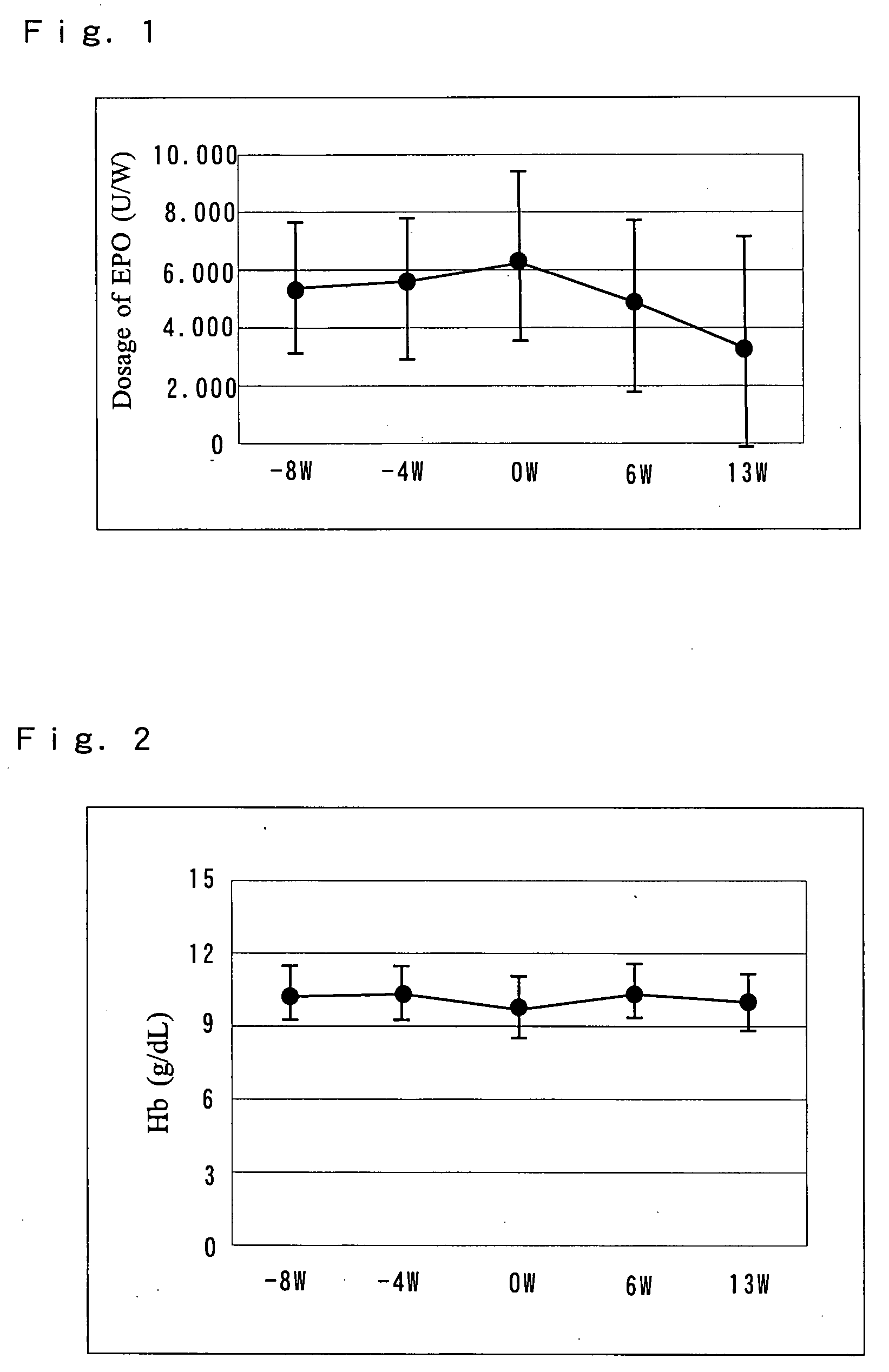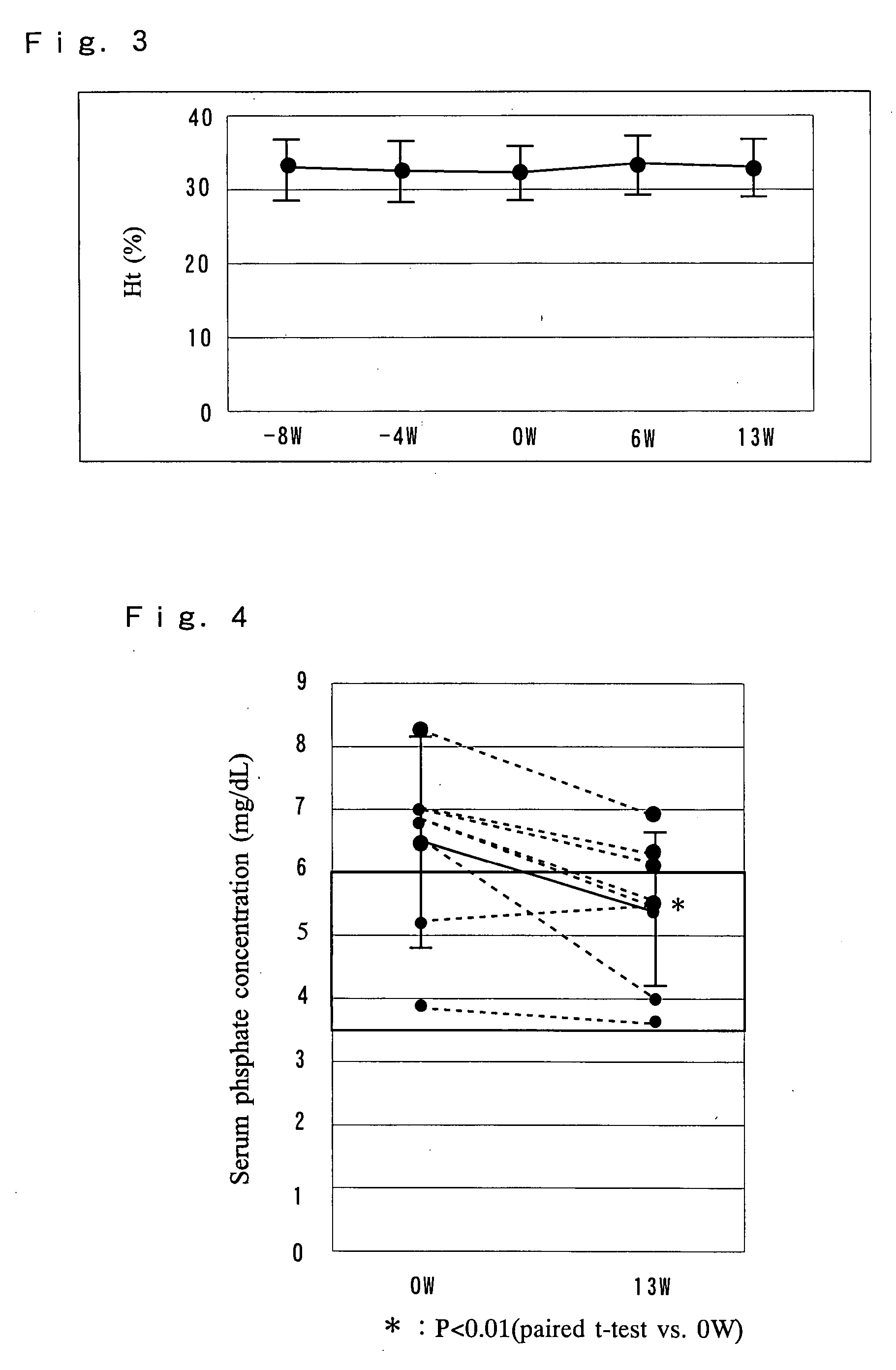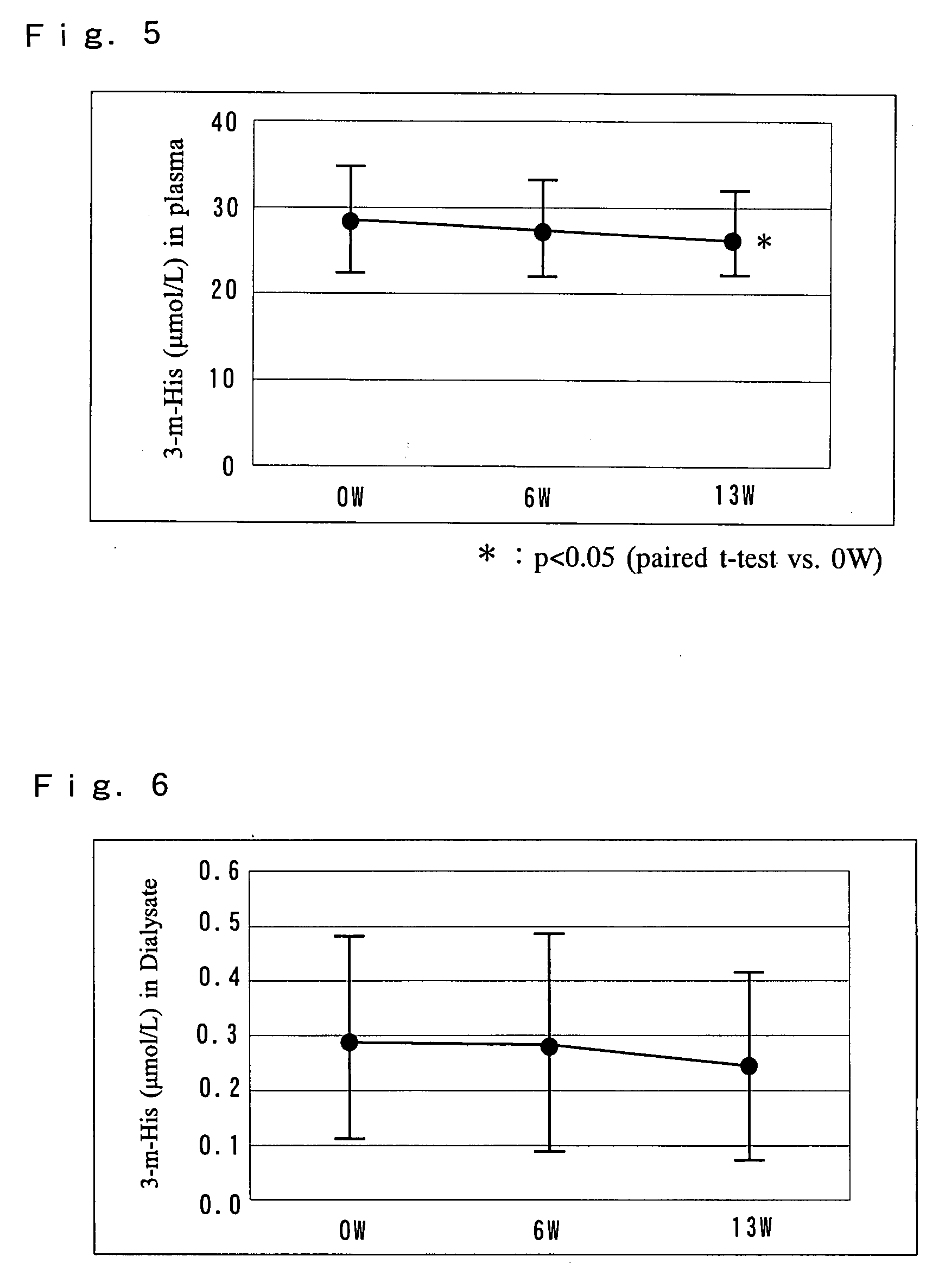Infusion fluid for dialysis patients
a technology for dialysis patients and fluids, applied in the field of dialysis patients' fluids, can solve the problems of iatrogen-induced malnutrition in patients, adversely affecting the prognosis of patients, and removing waste products, so as to prevent or alleviate anemia in patients and improve malnutrition
- Summary
- Abstract
- Description
- Claims
- Application Information
AI Technical Summary
Benefits of technology
Problems solved by technology
Method used
Image
Examples
example 1
Preparation of Antianemic Preparation (Amino Acid Infusion Fluid)
[0103] The components shown in Table 1 below were dissolved in water for injection in the specified amounts. The solution was subjected to sterile filtration and placed in a glass vial. The vial was sealed and autoclaved to make an antianemic preparation (amino acid infusion fluid).
[0104] The preparation had a pH of 6.6 to 7.6 and an osmotic ratio of about 2.
TABLE 1In 200 mLComponentsL-isoleucine1.500gL-leucine2.000gL-lysine (as acetate)1.400gL-methionine1.000gL-phenylalanine1.000gL-threonine0.500gL-tryptophan0.500gL-valine1.500gL-alanine0.600gL-arginine0.600gL-aspartic acid0.050gL-glutamic acid0.050gL-histidine0.500gL-proline0.400gL-serine0.200gL-tyrosine0.100gGlycine0.300gTotal Amino Acid12.200gAmino Acid concentration6.100w / v %AdditivesL-cysteine0.050gSodium hydrogen sulfite0.050gGlacial acetic acid (pH adjuster)As desired
[0105] The amino acid infusion fluid formulated according to Example 1 also serves as any o...
example 2
Determination of the Ability of the Pharmaceutical Preparation to Ameliorate Anemia and Reduce the Dose of Erythropoietin
[0106] 18 patients with chronic renal failure receiving hemodialysis (HD: 9 patients) or hemodiafiltration (HDF: 9 patients) were administered an exemplary antianemic preparation of the present invention to examine the ability of the preparation to ameliorate anemia and decrease the dose of erythropoietin.
Methods
[0107] A commercially available amino acid infusion fluid “NEOAMYU (registered trademark)” (200 mL preparation, Ajinomoto Pharma Co., Ltd.) formulated according to Example 1 was used.
[0108] Necessary checkups, tests and examinations were conducted on the day of the first dialysis (Monday or Tuesday) during the week before the administration period. Starting one week after the checkups, the “NEOAMYU” preparation was continuously administered over a time period of 12 weeks and one day (the day of 37th dialysis). Specifically, one bottle (200 mL) of the ...
example 3
Determination of the Ability of the Pharmaceutical Preparation to Control the Serum Phosphate Levels
[0114] 8 patients with chronic renal failure receiving hemodialysis (HD) were administered an exemplary serum phosphate-controlling preparation of the present invention to examine the changes in the serum phosphate levels.
Methods
[0115] A commercially available amino acid infusion fluid “NEOAMYU” (200 mL preparation, Ajinomoto Pharma Co., Ltd.) formulated according to Example 1 was used.
[0116] Necessary checkups, tests and examinations were conducted on the day of the first dialysis (Monday or Tuesday) during the week before the administration period. Starting one week after the checkups, the “NEOAMYU” product was continuously administered over a time period of 12 weeks and one day (the day of 37th dialysis). Specifically, one bottle (200 mL) of the preparation was infused at each dialysis session into the vein side of the dialysis circuit. The preparation was delivered over the e...
PUM
| Property | Measurement | Unit |
|---|---|---|
| Fraction | aaaaa | aaaaa |
| Fraction | aaaaa | aaaaa |
| Fraction | aaaaa | aaaaa |
Abstract
Description
Claims
Application Information
 Login to View More
Login to View More - R&D
- Intellectual Property
- Life Sciences
- Materials
- Tech Scout
- Unparalleled Data Quality
- Higher Quality Content
- 60% Fewer Hallucinations
Browse by: Latest US Patents, China's latest patents, Technical Efficacy Thesaurus, Application Domain, Technology Topic, Popular Technical Reports.
© 2025 PatSnap. All rights reserved.Legal|Privacy policy|Modern Slavery Act Transparency Statement|Sitemap|About US| Contact US: help@patsnap.com



